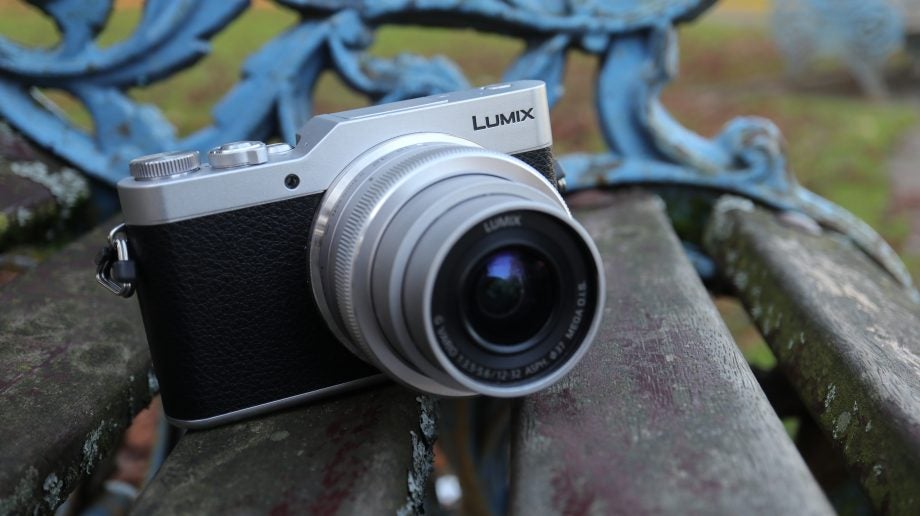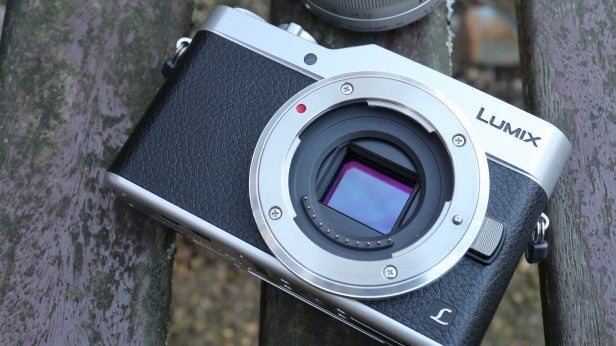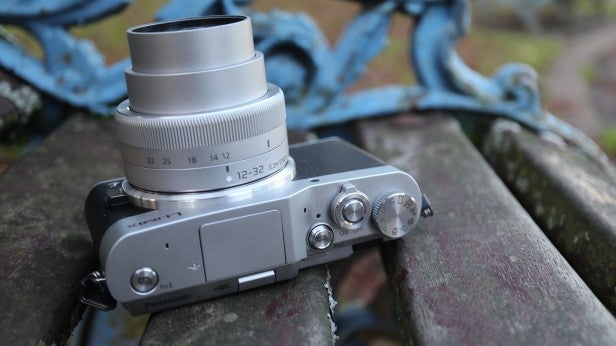Panasonic GX800 Review - Performance, Video and Verdict Review
Performance, Video and Verdict
A cute little CSC with a good range of features

Sections
- Page 1 Panasonic GX800 Review
- Page 2 Performance, Video and Verdict Review
Panasonic GX800 – Performance and AF
If you already have the kit lens extended – or if you’re using another lens altogether – the camera’s start-up time is very quick. The 12-32mm collapsible lens needs to be extended manually; it doesn’t pop out automatically. If you’re likely to be shooting a sequence of photographs in relatively quick succession, it’s worth leaving the lens extended, only packing it away at the end of the day again.
In most scenarios, autofocus is quick and accurate. If the light is very low, the 12-32mm lens can struggle to lock on. You can help it out by ensuring that the focus assist lamp is set to “on” in the main menu, but you may want to switch it off in certain places where it might not be welcome.
The GX800 can continuously focus, and it fares reasonably well if you’re tracking a moving subject that’s following a predictable pattern – it’d be fair to say that the GX800 is not the ideal camera for sports and wildlife photographers, though.

Panasonic GX800 – Image Quality
It’s not surprising to find that the GX800 delivers excellent image quality, with Panasonic having done so well with previous GX (and GF) series cameras in the past. Colours are warm and vibrant, without going so far as to be over the top.
Detail is well resolved, with special thanks to the filterless sensor which works well to produce richly detailed images. You can see a good level of detail when examining at 100% at the lower end of the sensitivity scale. Moving up to ISO 3,200, if you examine closely you’ll see that there’s smudginess in certain areas of the shot, but the overall impression is still great – especially if you’re sharing at normal web sizes, or printing at A4 or below.
The higher sensitivities aren’t ideal, unless you’re particularly desperate to get the shot. ISO 12,800 is usable at very small sizes, while ISO 25,600 you’d be best to avoid altogether. Still, it’s rare that you’ll need to venture into those territories for the majority of your shots.
Exposures are well balanced with the all-purpose metering setting selected, while white balance in the automatic setting is also close to being accurate in the majority of situations – erring ever so slightly towards warmer tones when faced with some kinds of artificial lighting (but still with a pleasing look overall).
While the 12-32mm lens doesn’t offer particularly wide apertures – f/3.5 at the widest point – it’s a nice little lens to get you started with a camera like this. The option to buy further lenses as you progress more with your photography is great, with the pancake prime lenses that Panasonic offers being the obvious choice for a small camera such as this.




Panasonic GX800 – Video
One of the marketing points of this camera is that it’s the cheapest 4K compact system camera on the market. The fact that 4K is becoming so commonplace means that every day consumers can have access to the Ultra HD video format in an increasingly easy manner.
Footage recorded in 4K is smooth and easily captured, and while this isn’t exactly a camera that dedicated videographers will be looking to buy, futureproofing your videos is no bad thing – even if they mainly consist of movies of the dog and the kids. If you want to save memory card (and hard drive) space, you can also record in 1080p Full HD, which yields some nice results.
Related: Best Cameras to Buy
Should you buy the Panasonic GX800?
This is a great option if you’re looking to move up from the limitations of your smartphone, or perhaps a basic compact camera, but without the complication of one of the larger CSCs currently on the market.
With enough functions to appeal to those looking for more advanced photography, the GX800 doesn’t forget that it’s intended for beginner users and also keeps it as simple as you need it to be.
It’s currently the cheapest CSC that Panasonic produces. That’s not to say that you can’t find cheaper models – older Panasonic GF cameras for a start – but for something which contains all the latest technology, including 4K, it represents decent value for money.
If you’re a little more advanced, you may want to consider the GX80, which is available for only a little more and gives you extra features, such as the electronic eye viewfinder.
Verdict
A cute little CSC which has a good range of features in an almost pocket-friendly package. It’s easy to use, takes great snaps and there’s room to grow with it if you find yourself wanting even more.
Trusted Score
Score in detail
-
Value 8
-
Features 9
-
Image Quality 8
-
Build Quality 9
-
Performance 8

